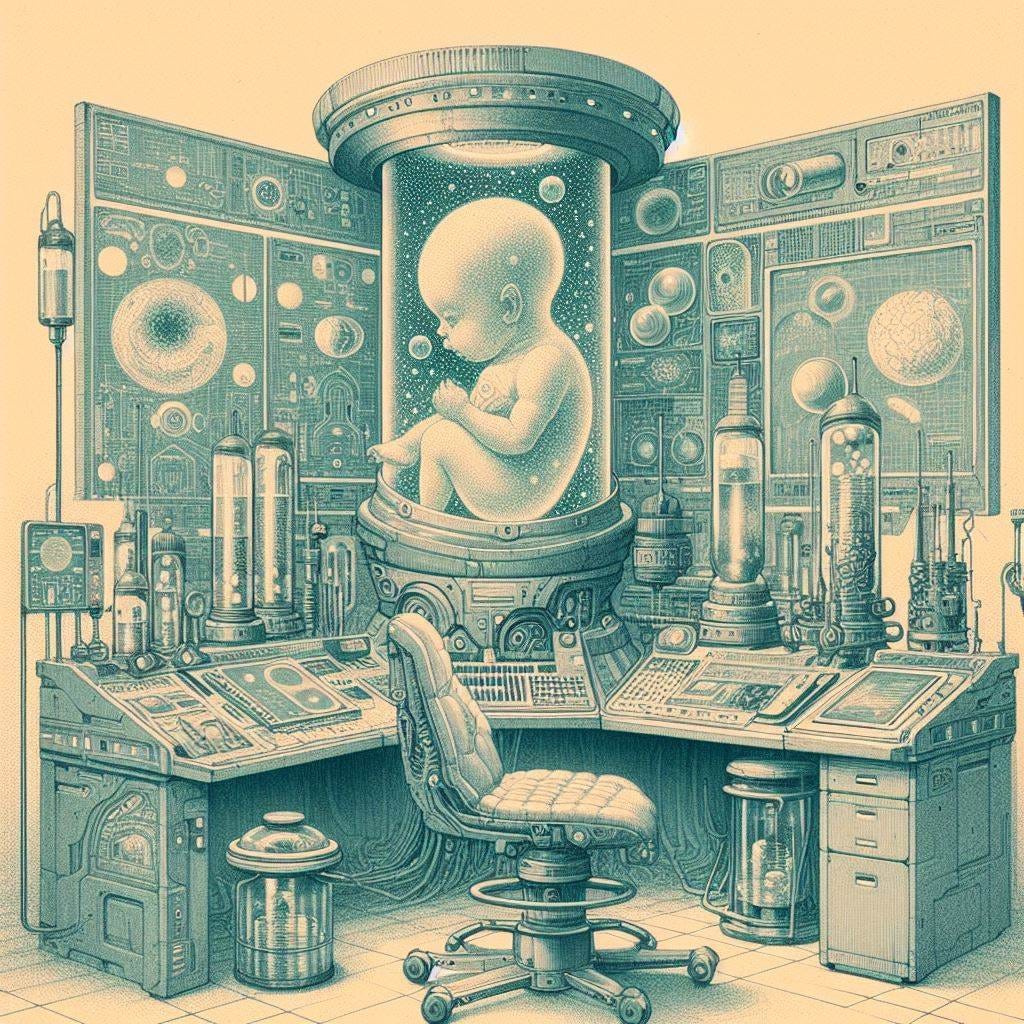Rewriting Destiny
Heavy rain drizzled down the grime-streak windows of the hospital room, which was sterile and cold inside. Molina clutched the thin blanket they had given her. Her skin was damp. The rhythmic hiss of the oxygen machine added to the eerie sounds of the storm.
Her eyes flicked to the door as it creaked open. Dr. Nguyen stood at the entrance with a frown on her face.
There was bad news. The doctor didn’t say anything until she closed the door, walked to the desk, and sat down. Even then, there was an uncomfortable silence.
“Molina…” she paused. “I have the results here from your amniocentesis.”
“Good news?” Molina’s voice cracked. Her whole mouth was dry.
Dr. Nguyen averted her eyes, staring instead at the tablet in her lap.
“We found a mutation in the CFTR gene. Your baby has a high likelihood of developing cystic fibrosis.”
Molina’s mind immediately raced, thinking back to her younger brother who spent years in hospitals. He struggled to make it past his teenage years. It was a series of tragic memories that she didn’t want to relive.
Tears began to stream down her face without her noticing.
“But, is there anything you can do?” she asked a now blurry doctor.
Dr. Nguyen lifted the screen and showed it. A complex molecular diagram pulsed in various colors.
“There is a new treatment Molina. It’s still in its early stages, but I believe you would be a good candidate.”
The doctor explained using a combination of CRISPR and language models, they would be able to isolate the genes responsible in the extracted fetal cells, correct it, and reintroduce them back into the amniotic sack.
“On this screen is a virtual representation of your fetus right now,” she continued. “Think of it like their digital twin. Here we can compare the proposed changes to their genome and we can show its likelihood of success.”
Molina stared back at the strange symbols moving around. She nodded, trying to take in what she was hearing. There was a chance to rewrite her child’s fate.
“Let’s do it,” Molina said to the doctor with a strong conviction. “Give my child a chance for a clear sky.”
The procedure began the next morning. Her world dissolved into a flurry of white coats and flashing monitors.
“Just sit back and relax,” Dr. Nguyen told her. “You can trust us.”
Molina lay back on the bed in the sterile room. She could hear the rhythmic beeps coming from the fetal heart monitor.
Guided by ultrasound, the thin needle of their surgery robot pierced her belly. It was just large enough to withdraw a sample of amniotic fluid.
That sample was sent to the lab next-door. There, the technicians worked over the next several hours to isolate the stem cells. A small processor in the corner churned through billions of calculations, determining what genes to modify through CRISPR.
After receiving the results, the technicians carefully injected the gene modifications to change the CFTR gene. The faulty code was fixed just like downloading a software update.
The sample was then returned to the operating room. The corrected cells were reintroduced into the amniotic fluid and inserted back into the fetus. Molina was then sent out of the hospital back to her life, not sure if anything changed.
She went about her normal day, meetings for work and walks at sunset. She monitored every movement of her unborn child with a mix of worry and hope.
It wasn’t until a few weeks later that she could finally return to the hospital for her next appointment with Dr. Nguyen. She went through another amniocentesis. There was usual sensations of the needle prick and eagerly waiting for the results.
This time, as the doctor entered, she gave a big smile.
“The gene editing worked Molina,” Dr. Nguyen said as she sat down. “The cells have incorporated the correction. The CFTR mutation is gone.”
Tears game down Molina’s face again, this time feeling a release of built-up tension. Hearing the word “gone” gave her a great joy that the illness which had cast a long shadow over her family was finally gone.
Amniotic fluid samples are giving us a lot of clues today on fetus development. I am curious to see how the field develops and how much control we may be able to get over the beginnings of life.


